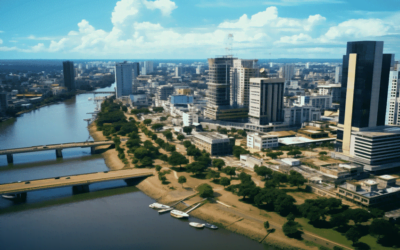Hey there, fellow drone enthusiasts! I know how it feels to be excited about flying your drone in Wales, but I’m wondering about all those pesky rules and regulations.
You’re probably searching for “Wales Drone Laws” to get a grip on what you can and can’t do with your trusty aerial companion.
Well, you’ve come to the right place because I’ve been there, and I’ve got the lowdown on the latest drone laws in Wales.
You see, I’ve spent hours delving into the nitty-gritty of Wales Drone Laws, researching the dos and don’ts, and ensuring that I’ve got the latest updates. Whether you’re a newbie or a seasoned drone pilot, I’ve got the answers to your search intent.
The laws can be a bit overwhelming, but fear not; I’m here to break them down for you, making sure you know exactly what you need to follow to enjoy your drone adventures in Wales without any legal headaches.
So, if you’re eager to lift off into the skies of Wales without any legal turbulence, read on. In this article, I’m going to guide you through the ins and outs of Wales Drone Laws.
I’ll keep it engaging, easy to understand, and filled with real-life examples to help you grasp the rules. Whether you’re wondering about registration, where you can fly, or privacy concerns, I’ve got you covered.
Let’s embark on this drone law journey together, and by the time you finish reading, you’ll have the confidence to take your drone to new heights, legally and responsibly. Let’s dive in!
- General Drone Regulations in Wales
- Airspace Restrictions and Airport Regulations in Wales
- Wales Drone Laws Privacy and Distance Regulations
- Common Sense and Safe Drone Operation
- Drone Registration with CAA
- Laws Specific to Wales
- Future Changes in UK Drone Laws
- Final Thoughts on Wales Drone Law
- Frequently Asked Questions About Wales Drone Law
General Drone Regulations in Wales

Let’s dive into the heart of it, shall we? General drone regulations in Wales may seem like a labyrinth, but I’m here to guide you through the twists and turns.
key rules set by the Civil Aviation Authority (CAA)
The Civil Aviation Authority (CAA) lays down the law when it comes to flying drones in Wales. They’re the big players in the sky, and their rules are there to keep things safe and orderly.
Keeping the drone in sight at all times
Picture this: you’re out in the gorgeous Welsh countryside, your drone ready to soar. But here’s the catch – you’ve got to keep that drone in your line of sight. It’s like flying a kite; if it’s too far away, you lose touch, and that’s a no-go.
The CAA insists on this rule to avoid unexpected surprises, just like you wouldn’t let a kite float off into the unknown, would you?
Altitude restrictions (below 400 feet or 120 meters)
Now, let’s talk altitude. The CAA has set a ceiling of 400 feet (that’s about 120 meters) for your drone.
Think of it like a road sign telling you the maximum speed on the highway. You don’t want to push the limits because safety is paramount.
Going higher can interfere with other aircraft, and that’s the last thing you want when you’re enjoying the breathtaking Welsh views.
No-fly zones near airports, airfields, and congested areas
The CAA isn’t just about the open skies; they’re also concerned about what’s happening on the ground.
You know how, when you’re driving, there are places where you just can’t park? Airports, airfields, and busy areas are a bit like those no-parking zones.
Drones shouldn’t buzz around these places to avoid interfering with planes and causing any potential hazards.
Differentiate between licensed and unlicensed operators
Okay, let’s tackle a vital point here – licensed vs. unlicensed drone operators. It’s a bit like the difference between a regular driver and someone with a special license, except in the skies.
Where unlicensed operators can fly (Wales but not England or Scotland)
Unlicensed operators have their wings clipped when it comes to flying outside Wales. So, if you’re not licensed, you’re somewhat bound to the stunning landscapes of Wales.
But honestly, with its lush green hills, dramatic coastlines, and enchanting castles, who needs more?
Flexibility for licensed operators
Now, if you’ve taken the time to get your drone pilot’s license, kudos to you! This certification grants you the freedom to choose where and when you fly.
It’s like having a pilot’s license for a drone, and that opens up a whole world of possibilities. Your drone can be your passport to explore the skies, not just in Wales but across the UK.
Also Read: Drone Regulation in Vietnam 2024
Airspace Restrictions and Airport Regulations in Wales

Now, let’s soar into the realm of airspace restrictions and airport regulations. These are the kinds of things that keep the skies safe and harmonious.
The CAA’s authority over all airspace in the UK, including Wales
The Civil Aviation Authority (CAA) is like the guardian of the skies, ensuring that everything up there is as smooth as a well-flown drone.
Their authority stretches over all of the UK, including our beautiful Wales. It’s a bit like the traffic police overseeing an entire highway system; they set the rules and keep things in order.
The significance of airport regulations and their role in ensuring safety
Now, let’s talk about airports. These bustling hubs of travel are like beehives, with planes buzzing in and out.
Imagine if a drone decided to join the party without an invitation – that would spell trouble. Airport regulations play the role of security bouncers, making sure drones don’t crash the party. They’re there to guarantee the safety of both drone operators and air travelers.
The need for CAA approval before flying near or at airports
Think of the CAA approval as your golden ticket to the drone amusement park. When you’re near an airport or airfield, you’ve got to make sure your drone is on the approved list, much like getting permission to access exclusive attractions.
The CAA vets your drone to ensure it won’t pose any risks to air traffic, and that’s their way of ensuring the skies stay safe and friendly.
Consequences of not adhering to airport regulations
Now, let’s talk about the consequences. Ignoring airport regulations isn’t just a matter of getting a slap on the wrist. It’s more like accidentally wandering onto a racetrack during a Formula 1 race – a dangerous endeavor with severe repercussions.
If you don’t follow the rules, you might find yourself in hot water, facing possible prosecution or even imprisonment. The rules are there to ensure safety for all, so it’s best not to take any chances.
So, when it comes to airspace restrictions and airport regulations, remember they’re not meant to clip your wings but to keep everyone safe and sound.
Adhering to them is the key to enjoying your drone flights while respecting the skies and those who share them with us.
Also Read: Drone Regulation in Venezuela 2024
Wales Drone Laws Privacy and Distance Regulations

Let’s explore the essential topic of privacy and distance regulations because respecting others’ personal space is crucial, even in the sky.
The importance of respecting the privacy of others
Privacy is a fundamental right, and that doesn’t change just because you’re flying a drone. It’s like when you’re at a party—you wouldn’t want someone peeking into your private conversations. The same applies when you’re piloting a drone. Respecting the privacy of others is not just polite; it’s the law.
Specific privacy regulations
Now, let’s dive into the specifics of privacy regulations, so you know exactly what’s expected of you.
Prohibition on flying over private property
Your drone, like a respectful guest at a gathering, should avoid private property. It’s pretty straightforward; don’t hover over someone’s house or garden without permission. Just as you wouldn’t wander onto someone’s land without an invitation, your drone shouldn’t either.
Maintaining a distance of 50 meters from structures not under the operator’s control
Think of this rule as maintaining personal space. If you’re flying within 50 meters of a building, keep your drone at least 2 meters away from it.
It’s a bit like respecting someone’s personal bubble; you don’t want to intrude. This distance ensures that your drone won’t get too close to structures that aren’t part of your flight plan.
Distance restrictions concerning people and animals on land or water
Flying over people or animals on land or in water requires a bit of care. Keep a respectful distance, much like you’d keep your distance at a zoo.
Flying too close can be disruptive, not to mention it might startle someone or a furry friend. It’s all about enjoying the skies while keeping our feet on the ground when it comes to other people and creatures.
Restrictions on flying over crowds, sporting events, and prisons
Lastly, let’s talk about some no-fly zones. Just as there are places you wouldn’t casually walk into, there are spaces you shouldn’t fly over.
Crowded gatherings, sporting events, and prisons are no-go areas for your drone. It’s about being sensible and responsible, ensuring your flights won’t cause disruptions or pose safety risks.
So, when you’re up in the air with your drone, remember that being a good neighbor extends to the sky. Respecting privacy and maintaining a safe distance ensures that everyone can enjoy the beauty of Wales without feeling intruded upon.
Also Read: Drone Regulation in Vatican City 2024
Common Sense and Safe Drone Operation

Let’s talk about the good old friend, common sense, and the safety measures that make drone operation a breeze.
The role of common sense in avoiding rule violations
Common sense is your trusted co-pilot when it comes to drone flying. Think of it as the navigator in your car, giving you directions and keeping you on the right path.
It’s your go-to guide for avoiding rule violations and ensuring safe and responsible drone operations.
Recommendations for Safe Drone Operation
Now, let’s delve into some recommendations that make operating your drone a walk in the park.
Keeping a safe distance from people and property
Just like you’d keep a safe distance from a bonfire to avoid getting burned, you should do the same with your drone.
Flying at least 50 meters away from people, animals, and structures that aren’t part of your drone or its payload is a golden rule.
It’s all about making sure you don’t accidentally bump into someone’s space, be it a person or a property.
Avoiding towns, cities, and built-up areas
Cities can be pretty crowded places, and so can the skies above them. So, it’s best to steer clear of towns and cities when you’re flying your drone.
It’s a bit like avoiding rush-hour traffic. Open spaces and the great outdoors are where you and your drone can spread your wings without worrying about congestion.
Specific distance guidelines when flying near buildings
When it comes to flying near buildings, here’s the scoop. Keep your drone at least 2 meters away if you’re within 50 meters of a building.
It’s a bit like maintaining personal space in a crowded elevator. This guideline ensures your drone doesn’t get too cozy with structures that aren’t part of your flight plan.
So, common sense is your best friend when it comes to safe drone operation. Following these simple recommendations ensures that your drone flights are enjoyable, respectful of others, and trouble-free.
Think of it as the key to unlocking the full potential of your drone while keeping everyone’s safety in mind.
Also Read: Drone Regulation in Vanuatu 2024
Drone Registration with CAA

Alright, now it’s time to explore the world of drone registration with the Civil Aviation Authority (CAA). Think of it as giving your drone its very own passport.
Drone registration process with the Civil Aviation Authority (CAA)
So, here’s the deal. When you’re all set to take your drone on a spin in the skies of Wales, you’ve got to make it official. The CAA, as the guardians of the airspace, wants to know who’s joining the flying club.
Registering your drone with them is like signing up for a club membership. It’s simple, and you can do it online, by post, over the phone, or even in person.
The process is designed to ensure that your drone complies with all safety regulations and doesn’t pose a threat to others or property.
Age requirements for operators and flying a drone
Age is just a number, they say. But when it comes to drones, it’s a number that matters. To register as an operator of a small unmanned aircraft in Wales, you must be at least 13 years old.
Think of it like getting your driver’s license. You can register a drone at any age, but to be behind the controls, you’ll need to wait until you’re 13. It’s all about ensuring that drone operators have a certain level of maturity and responsibility.
The importance of marking the registration number on each drone
Once your drone is officially registered, it gets its identification number. It’s like giving your drone a name, except it’s a combination of letters and numbers.
But here’s the crucial part – you’ve got to mark this number on your drone. Think of it as labeling your belongings so you know they’re yours.
This way, if your drone goes on an unplanned adventure and is found by the authorities, they can trace it back to you. It’s all about accountability.
Duration of registration (three years)
Your drone registration isn’t forever, but it’s a pretty good deal. Once you’re in, your registration lasts for three years.
It’s like a subscription to a drone club – you’ve got three years of membership. After that, you can renew it.
The CAA wants to keep things up-to-date and ensure that drone operators are still following the rules. It’s all about safety and making sure everyone plays by the same rules.
Also Read: Drone Regulation in Uzbekistan 2024
Laws Specific to Wales

Now, let’s uncover some of the laws that are specific to flying drones in Wales. Think of it as knowing the local customs when you’re visiting a new place.
Additional laws and regulations that apply in Wales
When you’re soaring through the skies of Wales, there are a few extra rules to keep in mind.
Age restrictions for drone operators
In Wales, if you want to be the one controlling that airborne marvel, you’ve got to be at least 13 years old. It’s a bit like being tall enough to ride the roller coaster at an amusement park.
This age limit ensures that operators have a certain level of responsibility and understanding before they take the drone’s reins.
Weight limits for drones
Drones come in all shapes and sizes, but in Wales, there’s a weight limit to consider. If your drone weighs more than 7kg (that’s about 15 pounds), you’ve got to keep it at least 150 meters away from people who aren’t part of your operation. It’s like giving large vehicles more space on the road, ensuring safety for everyone involved.
Specific distance restrictions
When it comes to distances, Wales has a few rules to make sure your drone doesn’t get too close for comfort. For example, flying over congested areas like roads, railways, and ports is a no-no. It’s like sticking to the main paths in a park to avoid trampling the flowers.
These rules are in place to keep the skies clear and make sure everyone can enjoy their drone flights without any worries.
Also Read: Drone Regulation in Uruguay 2024
Future Changes in UK Drone Laws

The world of drone regulations is ever-evolving, and it’s worth looking into what the future might hold for drone enthusiasts in the UK.
Mention the potential for future changes in UK drone laws
So, what’s on the horizon for drone laws in the UK? Well, there’s talk about potential changes, especially when it comes to drones weighing less than 20kg.
It’s like when your favorite game gets an update to make it even more exciting. These changes are aimed at improving safety and ensuring that drones can be operated without causing harm or disruption.
Highlight the focus on drones weighing less than 20kg
The spotlight seems to be on drones that weigh less than 20kg. That’s a pretty common weight class for many hobbyist drones. It’s like the authorities are paying special attention to the most popular vehicles on the road.
This focus is a response to the growing popularity of drones, and it’s all about ensuring that they can be operated safely and responsibly.
Mention any proposed flexibility and its current status
While some changes are on the table, there has also been discussion about introducing more flexibility when it comes to flying drones near people or property. However, the current status of these proposals isn’t set in stone.
It’s like a debate about changing the rules of your favorite board game—it might happen, but it’s not official just yet.
The future of UK drone laws is a topic worth keeping an eye on. As technology advances and more people take to the skies with their drones, it’s essential to strike a balance between enjoying the freedom of flight and ensuring safety for all.
So, while changes may be on the horizon, for now, it’s crucial to follow the existing regulations and keep an ear out for any updates.
Also Read: Drone Regulation in United States 2024
Final Thoughts on Wales Drone Law

As we wrap up our journey through Wales’ drone laws, let’s take a moment to recap the essential rules and regulations that every drone operator should keep in their flight plan.
We’ve covered quite a bit, but the fundamental rules are keeping your drone in sight at all times, flying below 400 feet, and avoiding airports and congested areas. These rules are like the foundation of a sturdy building – without them, everything else can crumble.
One thing that can’t be stressed enough is the role of common sense. It’s like the North Star guiding your drone flights. Avoid flying too close to people or property, stay away from towns and cities when possible, and maintain a safe distance from buildings. Just like you wouldn’t wander too close to a busy construction site, you wouldn’t let your drone get too close to potential hazards.
Safety and responsibility should always be your co-pilot on every drone adventure. It’s not just about following the rules; it’s about ensuring that you, your drone, and everyone around you stay safe. Think of it like being a lifeguard at a pool—always ready to jump in and assist if needed.
As you step into the world of drone operations in Wales, remember that knowledge is your best ally. Stay informed, stay safe, and protect not only yourself but also the reputation of all drone enthusiasts. It’s like being part of a community – everyone plays a role in shaping the future of drone operations.
So, as you prepare for your next drone flight in the stunning landscapes of Wales, keep these rules in mind. They’re not just regulations; they’re your guide to exploring the skies safely and responsibly. Fly high, stay informed, and enjoy the adventure!
Frequently Asked Questions About Wales Drone Law
1. Can I fly my drone in Wales without a license?
Yes, you can fly your drone in Wales without a license, but there are specific rules and regulations you must follow.
For example, you should always keep your drone in sight, stay below 400 feet, and avoid flying near airports or congested areas.
However, if you’re a licensed operator, you have more flexibility in choosing where and when to fly.
2. Are there restrictions on flying near airports in Wales?
Absolutely. Airspace around airports and airfields in Wales is controlled by the Civil Aviation Authority (CAA).
Flying near airports or airfields is not only regulated by the CAA but also by the airports themselves.
It’s crucial to get approval from the CAA before flying near or at an airport or airfield to avoid potential legal consequences.
3. What are the privacy rules for drone operators in Wales?
Respecting the privacy of others is a vital aspect of drone operations in Wales. You should avoid flying over private property, maintain a distance of at least 50 meters from structures not under your control, and steer clear of flying over crowds, sporting events, large gatherings, and prisons. Privacy and safety go hand in hand in the world of drones.
4. Can I fly my drone over towns and cities in Wales?
While it’s not prohibited, it’s strongly recommended to avoid flying your drone over towns, cities, and built-up areas in Wales whenever possible. Safety and common sense should be your guiding principles.
The risk of accidents or disruptions in these areas is higher, so it’s best to explore the beautiful landscapes and open spaces Wales has to offer.
5. Are there age restrictions for operating a drone in Wales?
Yes, there are age restrictions for drone operators in Wales. To register as an operator of a small unmanned aircraft (drone) in Wales, you must be at least 13 years old.
You can register a drone at any age, but you must be at least 13 years old to actually fly a drone. Safety and responsibility apply to drone operators of all ages.













